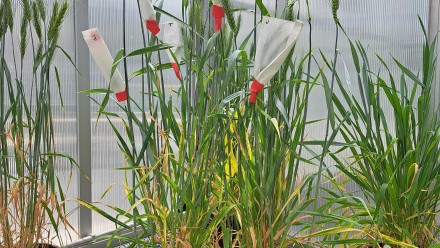Developing new genetic systems for hybrid breeding in wheat
Hybrid wheat varieties yield 10-15% more than conventional lines but a cost-effective system to produce hybrid seeds on a commercial scale is missing. Currently, the most widely used hybrid seed production system in wheat, based on Triticum timopheevii cytoplasm, is genetically complex and difficult to use in breeding programmes.
This project aims to characterise new sources of CMS for hybrid breeding systems in wheat. This new CMS originates from the cytoplasms of three close wheat wild relatives from the Aegilops genus: Aegilops kotschyi, Ae. uniaristata and Ae. mutica. The advantage of this system over the T-CMS is that all wheat cultivars tested so far carry a strong restorer for this CMS on the short arm of chromosome 1B, thus can be used as restorer lines. In case of T-CMS, the restorer lines are developed through labour-intensive and time-consuming introgression breeding from T. timopheevii or by crossing with the few T. aestivum lines known to carry a restorer gene.
An easier to use system will allow faster adoption of hybrid breeding technologies in wheat on a commercial scale. Higher and more stable wheat yields will translate into higher food security in Australia and worldwide.
This project involves national and international collaborations.
Interested in the project? Please contact Dr Joanna Melonek for more details.





